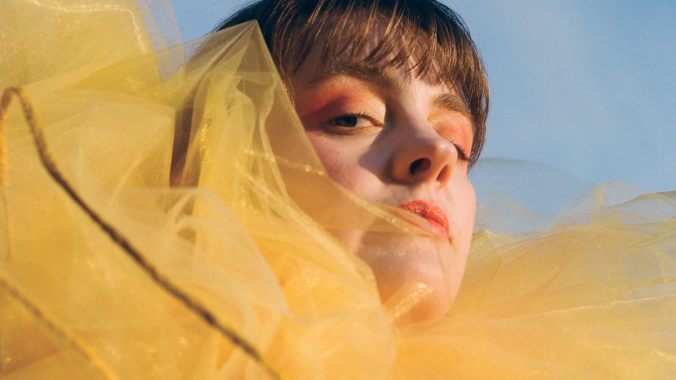Madeline Kenney Collects Herself on A New Reality Mind
The Bay Area singer/songwriter debuts her solo production chops on fourth LP

It’s a tale as old as time: Enter an all-consuming relationship, teeming with love, and write an album about it. Bay Area singer/songwriter Madeline Kenney did just that on 2020’s Sucker’s Lunch. But that tale often comes with a flipside: a painstaking yet abrupt end, experientially akin to disembarking from a thrilling coaster to find you need to get your land-legs back. Kenney works on re-tethering her newly independent self to her circumstances on A New Reality Mind, her fourth full-length album since 2017. Just a few months removed from the breakup, Kenney arrives clear-headed, gesturing towards ornamented synth-pop through production done all on her own. A New Reality Mind offers an entrancing, peculiar sonic palette never before seen on Kenney’s albums, ensconcing her in a tradition with dance music and indie-rock roots to create something unmistakably hers—which makes her stylistic choices, sometimes tame and sometimes daring, a feat to track.
“Well, I might as well sit down and try, if nothing else, to get by,” Kenney starts on “Plain Boring Disaster,” an all-but-boring song that weaponizes the electric guitar, autotune and synths that glow like a starry night sky to remove any facade she has about her newfound lonesomeness. Each element punctures a wound in the artifice, forcing Kenney to reckon with the finality of her relationship and all the mishaps that got her there. The track is structured less like a song and more like a thesis statement, hastily pivoting into “Superficial Conversation,” a song narrating the cathartic act of shedding past habits. Its lyrical frankness is akin to Samia and the sonic denouement of CHVRCHES. Synths are Kenney’s co-star on the album, propelling “Superficial Conversation” forward and pulsating like alarms on “Reality Mind.”
One of the album’s centerpieces, “I Drew A Line,” is a curious track inspired by the quirkiest of ‘80s creativity grounded by simple mid-tempo percussion. The layers are quirky and intricate, with the saxophone solo in the track’s middle being an exciting standout. But all of it can grow repetitive. The unique, interjecting moments on the song call attention to the repetitive synth storms underneath and a percussion that grounds the song in, arguably, too normal a territory. That is to say: The experimental moments have room to get weirder. But, at one level, there is always a tension after a breakup to both sow chaos and create order for yourself and, most of the time, Kenney walks that line brilliantly. But, some further chaos would not hurt.
“It Carries On” has some more of that energy, especially in the saxophone solo, over what could best be described as a lounge song from the future. Kenney weaves between minimalism and maximalism confidently. On a track like “The Same Again,” she layers her voice into transhuman territory, sounding more like a cyborg than a woman. It’s when she layers her voice this starkly that it’s the most exciting. Sometimes, when the affectations are slightly less processed, like on parts of “I Drew A Line,” she sounds not unlike Taylor Swift onMidnights: Underscored, certainly, but not always bold. Kenney is most imaginative at her boldest.
-

-

-

-

-

-

-

-

-

-

-

-

-

-

-

-

-

-

-

-

-

-

-

-

-

-

-

-

-

-

-

-

-

-

-

-

-

-

-

-








































